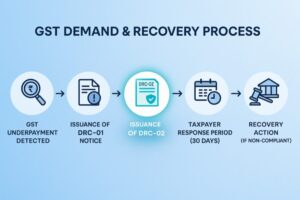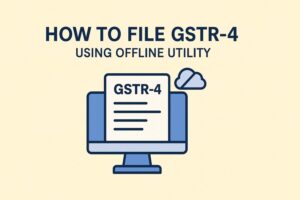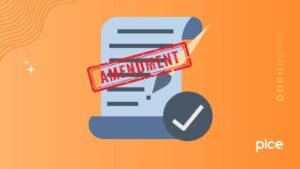Know in Detail about Electronic Cash Ledger in GST
- 8 Jan 25
- 11 mins
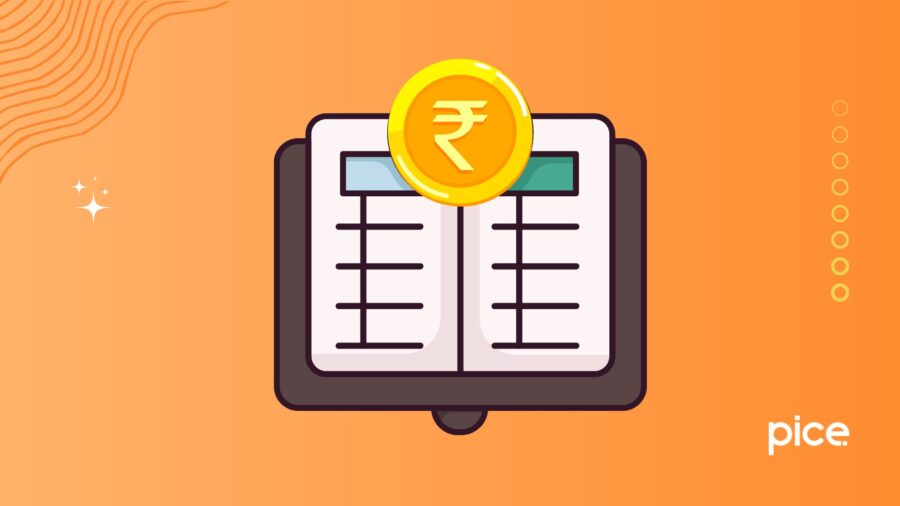
Know in Detail about Electronic Cash Ledger in GST
Key Takeaways
- GST ledgers track tax deposits, input tax credits, and liabilities in real time.
- Accessible via the GST portal, they simplify compliance for registered persons.
- Deposits can be made using various payment methods like NEFT, RTGS, and cards.
- Discrepancies in ledgers can be resolved by filing FORM GST PMT-04.
- These digital tools ensure accurate GST payments and hassle-free return filing.
While most people are familiar with the GST portal (https://www.gst.gov.in/), it contains GST ledgers and a register, the knowledge of which is crucial to any registered person. Registered persons can get access to ledgers on the GST portal upon logging in.
Electronic cash ledgers in GST, the credit ledger, and the liability ledger are electronic systems that track the tax amount, fee, interest, penalty, or any other amount deposited by the registered person. This amount is utilised towards output tax liability. The electronic ledger in GST makes it convenient for taxpayers or registered persons to track their tax obligations and payments.
GST Ledgers: Electronic Ledgers Types
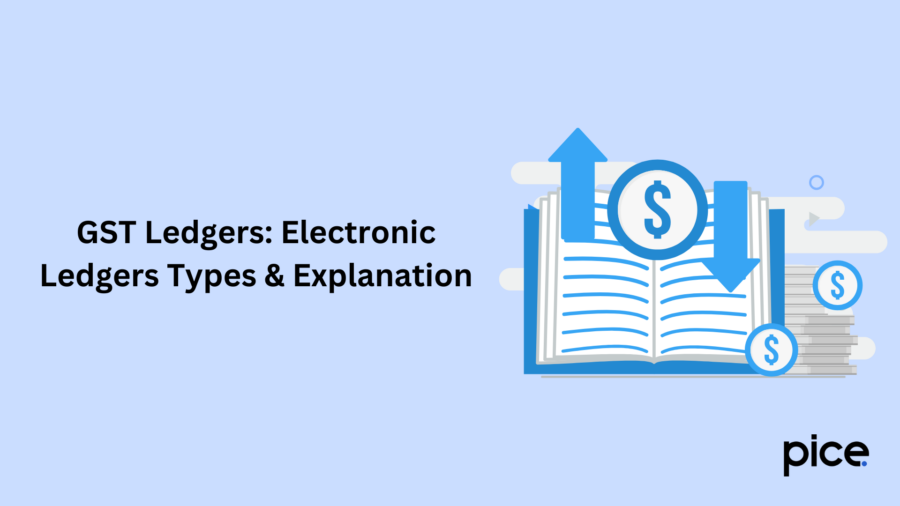
To aid your basic understanding of the concept, the types of electronic ledgers under GST are listed below in the table:
| Ledgers | Provisions | Details |
| Electronic Cash Ledger | Section 49(1) of the Central Goods and Services Tax Act, 2017, read with Rule 87 | It reflects the deposits made for tax, fees, interest, penalties, and other amounts made by a registered person under the GST system in India. |
| Electronic Credit Ledger | Section 49(2) of the Central Goods and Services Tax Act, 2017, read with Rule 86 | It displays the input tax credit claimed by a registered person under GST. |
| Electronic Liability Ledger | Section 49(7) of the Central Goods and Services Tax Act, 2017, read with Rule 85 | It portrays the tax, penalty, interest, fee or any other liabilities that a registered person is obliged to pay. It reflects the GST liability of a specific taxpayer within a certain tax period. |
What Is an Electronic Cash Ledger?
The Electronic Cash Ledger essentially displays a summary of the various deposits and any GST payments made by a specific registered person. Within this online ledger, details are saved minor head-wise for each umbrella category. However, to aid the convenience of the user, the ledger showcases major head-wise, i.e., IGST, SGST/UTGST, CESS, and CGST.
Further, these "major heads" are divided into 5 minor heads, including tax, interest, penalty, fee, and Others. The same can be accessed at the post-login stage on the online GST portal under the category of "Services". One can then click on "Ledgers" and finally, “Electronic Cash Ledger." The cash deposited under minor heads can be used for payment of tax, fee, interest, penalty, or other.
In simpler words, the electronic cash ledger is a record maintained by the GST system of the registered person, reflecting their cash deposits in recognised banks, tax payments, and other dues met by them. The Tax Deducted at Source (TDS) and Tax Collected at Source (TCS) are also reflected in the Electronic Cash Ledger under the section of cash deposits by the registered person.
Deposits can be made via credit cards or debit cards, via authorized banks, internet banking through authorised banks, NEFT/ RTGS, over-the-counter payments for deposits up to ₹10,000 per challan during a tax period, via cash/cheque/demand draft through authorised banks.
As a registered person, one may deposit cash in recognised banks through the allowed modes of payment to the Electronic Cash Ledger. This can be done using either the online or offline methods permitted by the GST portal. The cash deposits can then be used for payments, including ones to meet tax liabilities, interest, penalties, fees, and others.
Note that this GST ledger can be accessed for a maximum period of 6 months. The registered person can refer to the calendar and pick out dates under 'From' and 'To' to set a time period within which the Electronic Cash Ledger can be viewed.
GST Ledgers: Role under GST
Electronic Cash Ledger, Electronic Credit Ledger, and Electronic Liability Register all serve an important role under the GST system. The ledgers and the register are available on the GST portal. Any registered person can access the same once they log into the portal. The role of GST ledgers is summarised below in three points:
● Electronic Cash Ledger displays the exact amount of tax/interest/fee/penalty/other deposits made by a registered person, alongside the amount put towards output tax liability.
● Electronic Credit Ledger displays the amount of freshly eligible input tax credit alongside the amount of input tax credit used.
● Finally, the Electronic Liability Register shows the output tax liability made by a registered person and the way in which the same is released.
How Do e-Ledgers Under GST Work?
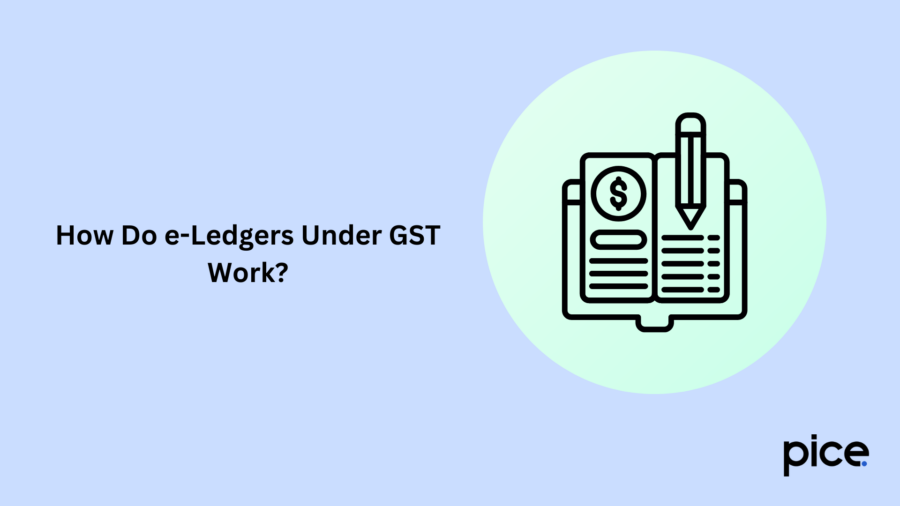
The Electronic Cash Ledger is sustained in FORM GST PMT-05 for every registered person who is liable to pay interest, tax, a late fee, penalty, or another amount. This payment is to be done through a common portal used for crediting an amount deposited and debiting the payment made towards tax, interest, penalty, fee, or other.
If the payment is necessary to be made by a non-registered person under GST, it can be done on the basis of the assigned temporary identification number. This identification code or number is generated through the common portal.
A challan in FORM GST PMT-06 may be generated on this common portal. The details of the to-be deposited amount towards tax, interest, penalty, fees, or other must be typed in. The validity of this challan spans over 15 days.
Next, the electronic credit ledger is maintained in FORM GST PMT-02 for every registered person on the common portal. Each claim of input tax credit will be credited to this very ledger. The input tax credit is self-assessed by a registered person and is credited to their electronic credit ledger.
Finally, the electronic liability register is maintained in FORM GST PMT-01 for every registered person who is liable to pay interest, tax, penalty, a late fee or other amounts through the common portal. The amounts payable by the individual will get debited to the liability register.
This electronic liability register is maintained in two sections at the common portal, namely Part 1 and Part 2. While Part 1 maintains return-related liabilities, Part 2 Records a complete description of the transactions regarding accruing, return-related transactions, etc.
How to Deposit Money in e-Ledgers Under GST?
One can deposit money into the e-Ledgers under GST using the following payment methods:
● Internet banking via authorised banks
● Debit/credit cards associated with authorised banks
● NEFT (National Electronic Fund Transfer)
● RTGS (Real-Time Gross Settlement)
● Over-the-counter payment via authorised banks (maximum deposit up to ₹10,000 per challan; made through cheque, cash or demand draft.)
Keep in mind that the restriction upon deposit amount does not apply in the case of the following entities:
● Government department
● A deposit specified by the commissioner
● The proper officer who is authorised to recover a pending due from an unregistered person or registered person.
● Authorised officer who is to collect an amount in cash, cheque or demand draft form during an investigation
A single challan should be paid using a particular payment mode. If an individual uses more than one payment mode, separate invoices for each payment method must be generated. After that, the individual should print the challan for payment.
Filing of GST PMT-04
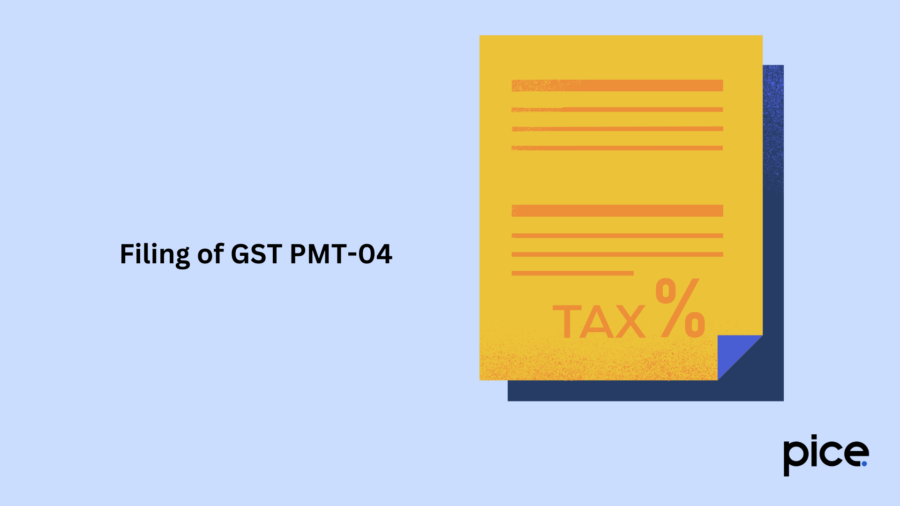
PMT-04 is the GST form through which an individual can file complaints or grievances related to the ledgers. For instance, if there is a discrepancy in the electronic liability ledger, electronic cash ledger, or electronic credit ledger, a registered person can report the same to the officer who is exercising jurisdiction regarding the matter. The former can do so through the common portal in FORM GST PMT-04.
Here is a step-by-step guide for filing the GST PMT-04:
Step 1: Visit the GST Portal. Put in your credentials and log in.
Step 2: Select ‘Services’, ‘User Services', and finally, ‘Grievance/Complaints’. After this, the ‘Submit Grievance’ section pops up, once the Grievance/Complaints page is shown.
Step 3: If an individual is filing the grievance for a second time, the grievance ID of the last time will need to be entered within the ‘Previous Grievance Number’ section.
Step 4:. Open up the Grievance Type drop-down list and select the 'Grievance Against Ledgers/Register' option.
Step 5: Choose one of the 3 shown options within the Grievance Related To drop-down list.
Step 6: Information like the individual’s GSTIN or other ID, name and place of business, mobile number and email address will be auto-filled out unless they are still not logged in.
Step 7: Write down the name of the person willing to lodge a complaint in the ‘Name of Complainant’ field.
Step 8: Specify the details of the grievance within the section ‘Description of Grievance’.
Step 9: Upload required documents to support the claim of grievance by selecting the ‘Choose File button’ (file format of PDF/JPEG; maximum file size of 500 KB).
Step 10: Carefully fill out the Details of the Discrepancy in the Liability Register/ Electronic Credit Ledger/ Cash Ledger fields. Select the ‘ADD’ button once done.
Step 11: Choose a 'Sign with the Authorised Signatory’s PAN' option.
Step 12: Finally, select an authorized signatory from the drop-down list.
Step 13: Select either ‘SUBMIT WITH DSC’ or ‘SUBMIT WITH EVC’ in order to complete the process.
Note: An individual may raise a grievance without logging in to the GST Common portal. In that case, they will be required to enter a Captcha code at step 10.
Thus, following the above-mentioned simple steps, you can file GST PMT-04.
Conclusion
Knowing that the GST ledgers is important for businesses so they can manage their GST compliance effectively. The Electronic Cash Ledger in GST, alongside the Liability Register and the Credit Ledger, serves as a convenient electronic system for tracking credits, payments, as well as liabilities. They extend a record of tax payments made in real time.
Additionally, they display the remaining balance for future GST payments. By leveraging such digital ledgers, registered persons can be assured of timely and accurate GST compliance, avoiding potential errors or penalties. It also prompts a hassle-free GST return filing experience.
💡If you want to streamline your payment and make GST payments, consider using the PICE App. Explore the PICE App today and take your business to new heights.
 By
By 





